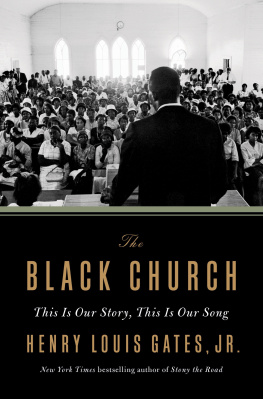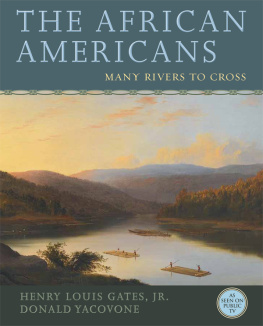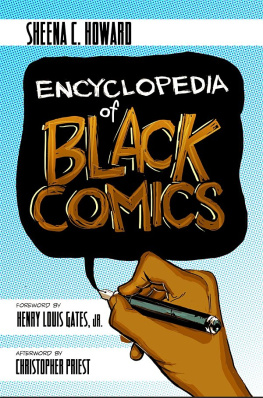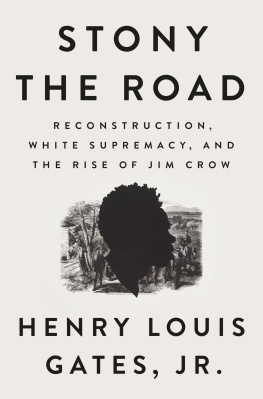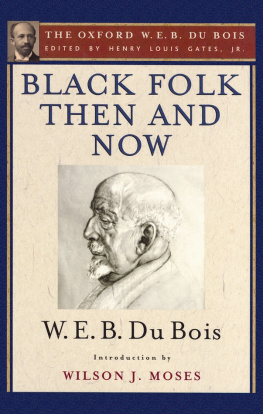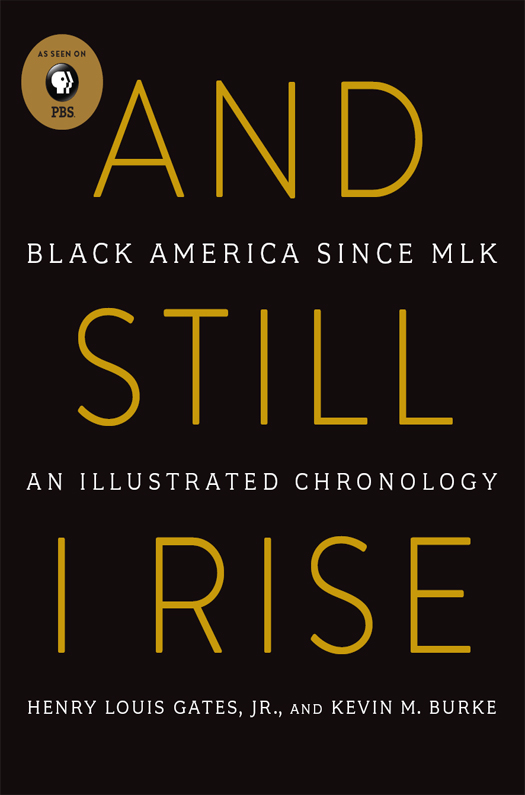
Choreographer Bill T. Joness We Set Out Early... Visibility Was Poor premieres at the Brooklyn Academy of Music in 1997. Here, it is performed in London.
Finding Your Roots: The Official Companion to the PBS Series
The African Americans: Many Rivers to Cross, with Donald Yacavone
The Henry Louis Gates, Jr. Reader
Life Upon These Shores: Looking at African American History, 15132008
Black in Latin America
Tradition and the Black Atlantic: Critical Theory in the African Diaspora
Faces of America: How 12 Extraordinary Americans Reclaimed Their Pasts
In Search of Our Roots: How 19 Extraordinary African Americans Reclaimed Their Past
Finding Oprahs Roots: Finding Your Own
The Trials of Phillis Wheatley: Americas First Black Poet and Her Encounters with the Founding Fathers
The African American Century: How Black Americans Have Shaped Our Century
Wonders of the African World
Thirteen Ways of Looking at a Black Man
The Norton Anthology of African American Literature, with Nellie Y. McKay
The Future of the Race, with Cornel West
Colored People: A Memoir
Loose Canons: Notes on the Culture Wars
The Signifying Monkey
Figures in Black: Words, Signs, and the Racial Self
For Larry Bobo and Marcyliena Morgan
and
Brian and Sharon Burke

Grant Park, Chicago, IL: President-elect Barack Obama walks across the stage with his family on election night 2008.
CONTENTS
Guide

Martin Luther King, Jr., at home with his wife, Coretta, and their children Yolanda and Martin Luther King III in 1960.
... Im a black ocean, leaping and wide,
Welling and swelling I bear in the tide.
Leaving behind nights of terror and fear
I rise
Into a daybreak thats wondrously clear
I rise
Bringing the gifts that my ancestors gave,
I am the dream and the hope of the slave.
I rise
I rise
I rise.
Maya Angelou, Still I Rise from And Still I Rise (1978)
A companion book to the PBS series of the same name, And Still I Rise: Black America Since MLK, is an illustrated chronology of the last fifty years in African American history and culture, bookended by the climactic moments of the civil rights movementincluding the passage of the Voting Rights Act of 1965 and the assassinations of Malcolm X and Martin Luther King, Jr.and the once unimaginable, and now nearly complete, two-term presidency of Barack H. Obama. More broadly, it is a record of a people whose numbers have nearly doubled since 1970, from twenty-two million to forty-two million, such that if they constituted their own country, its population would be ranked thirty-second in the world. It also is a record of a people whose history-defying rise from bondage to the highest rungs of society, amassing accolades and power, wealth and land, genius and achievement, provides the nation with some of the most heroic strokes of its broader narrative.
At the same time, And Still I Rise is the record of divergenceof a childhood poverty rate that remains stubbornly close to what it was the day MLK was assassinated, even as the ranks of the middle and upper classes have swelled; of an unemployment rate that runs nearly double that of the national average; and, as alarming, of a society where the harassment of and distrust between impoverished communities and the police that once galvanized the formation of the Black Panthers in 1966 continue to plague us, with an ever greater number of place names in America seared into memory for the lives there cut short. It is also the record of a people who, in the governments shift from battling poverty to crime over these decades, now comprise more than a third of the US prison population, even if only 13 percent of the larger population. And Still I Rise is a record of a people who have made astonishing progress since the King years but who also continue to confront questions that have persisted in this country since the first slave ships arrived: of whether black lives matter at all.
At the root of this book is a seemingly simple question: What binds African Americans together? Is it the inheritance of memories and experiences from one generation to another? Is it the legacy of a system of laws that, for the majority of American history, drew a color line based on drops of blood? Is it the common cause that has come from fighting for so long for freedom and equality, or the cultural ties that unite a people through the poems, sermons, and songs that speak to their epic struggles? Or, given the sheer diversity and divergence in evidence within black America, especially since 1965, is it still even possible to think of forty-two million people as a unified cultural or social entity at all?
While the documentary series And Still I Rise wrestles with these tensions through big and small stories, and through the expertise of some of the finest thinkers in our country, our motivation in fashioning this companion book was to establish the basic plot points of this fifty-year period in a year-by-year chronology of what happened when and where and how events remembered distinctly actually happened alongside others that sometimes sync and at other times clash. Our chronology is in no way exhaustive. It is intended to start a conversation, within generations and between generations.
Put another way, it is a book that illuminates the world that the Civil Rights Movement birthed and enabled, and that its legacy sustainedfrom affirmative action to the integration of our nations universities, from the ascent of numerous black mayors in numerous cities to the development of black capitalism and the phenomenal growth of the black middle class, from the domination of popular culture by black artists and performers to the rise of black access to and leadership in any number of fields once closed to the many millions of descendants of slaves.
This is also a chronology of voices. The half century that follows the passage of the Voting Rights Act and the deaths of Malcolm and Martin really was the first period in American history when the country as a whole began to see and hear black people as themselvesbecause black people insisted upon being seen and heard as themselves. With that unmasking came an evolution at hyperspeed of what we might call styles of blackness, styles signified not only by dashikis and Afros but also by business suits and designer gowns.
To be sure, these voices are anything but a single chorus singing from the same page. In this same period, the double consciousness that W. E. B. Du Bois introduced in The Souls of Black Folk (1903) as the defining concept of African American existence began to reveal itself to have fragmented into myriad black identities that refute the very idea of a monolithic black identity or of a single entity that we can call Black America. African Americans may have voted for Barack Obama in overwhelming numberstwicebut in many real ways, thats where the unified identity ends: African Americans today are as riven by class distinctions just as profoundly (and just as jaggedly) as Americans as a whole are: there is a 1 percent of African Americans, too.



